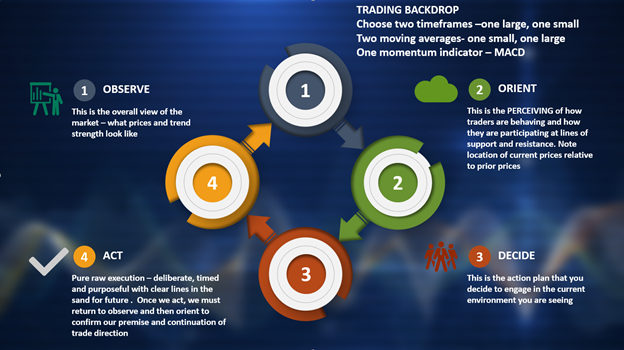Trading well means that we gain positive portfolio performance over time. The anchor of that kind of motion is grounded in consistency, says Anne-Marie Baiynd of TheTradingBook.com.
Consistency is the most difficult thing for us as humans—we have trouble with specific routines that require discipline.
Trading strategies built on price primarily will give us the most reliable and consistent results—technical indicators can help us confirm what price is showing us. Unless price shows us what the indicator is potentially indicating, it only remains a clue to what might be occurring. These types of strategies are few and far between across the landscape as price can be difficult to interpret. But they can be combined with any trading strategies in your arsenal just so long as you allow price to be the driver of your decisions to enter and to exit.
The first measure of strength of a trading strategy is how well it estimates the overall temperament of the market environment. From this, we can decide whether traders are primarily bullish, bearish, or congested in a range: and then assess our probability of success trading in one direction or another—and for how long we are to hold the trade.
As you assess a strategy for efficacy and performance, ask the following questions:
- Does this strategy give you a solid story about why a trade might work? Or, can we see a range of a trend that clearly defines an entry and potential exit?
- Does the risk that you have assessed for yourself hold within the parameters of the chart? That means if you normally take a 1-2% risk event, is your entry within the natural support or resistance that the chart is showing you? If you identify support further away from your entry than your risk, it may be wiser to wait for price to come closer to you before your execution. RISK MUST BE DEFINED BY MARKETS—once the markets tell you the risk, you can decide whether you are willing to participate.
Once you have established the environment, your risk, and your trade parameters, consider using the OODA loop to assist with your decisions.
THE OODA LOOP is the cornerstone of my decision process. It is the reason for my consistent performance over time and nothing builds confidence like consistent performance.
Note the self-describing image below.
The OODA Loop: OBSERVE, ORIENT, DECIDE, ACT – Four simple steps that will catapult your trading performance to the next level.

Anne-Marie Baiynd is a full-time independent trader and can be found at TheTradingBook.com.


















